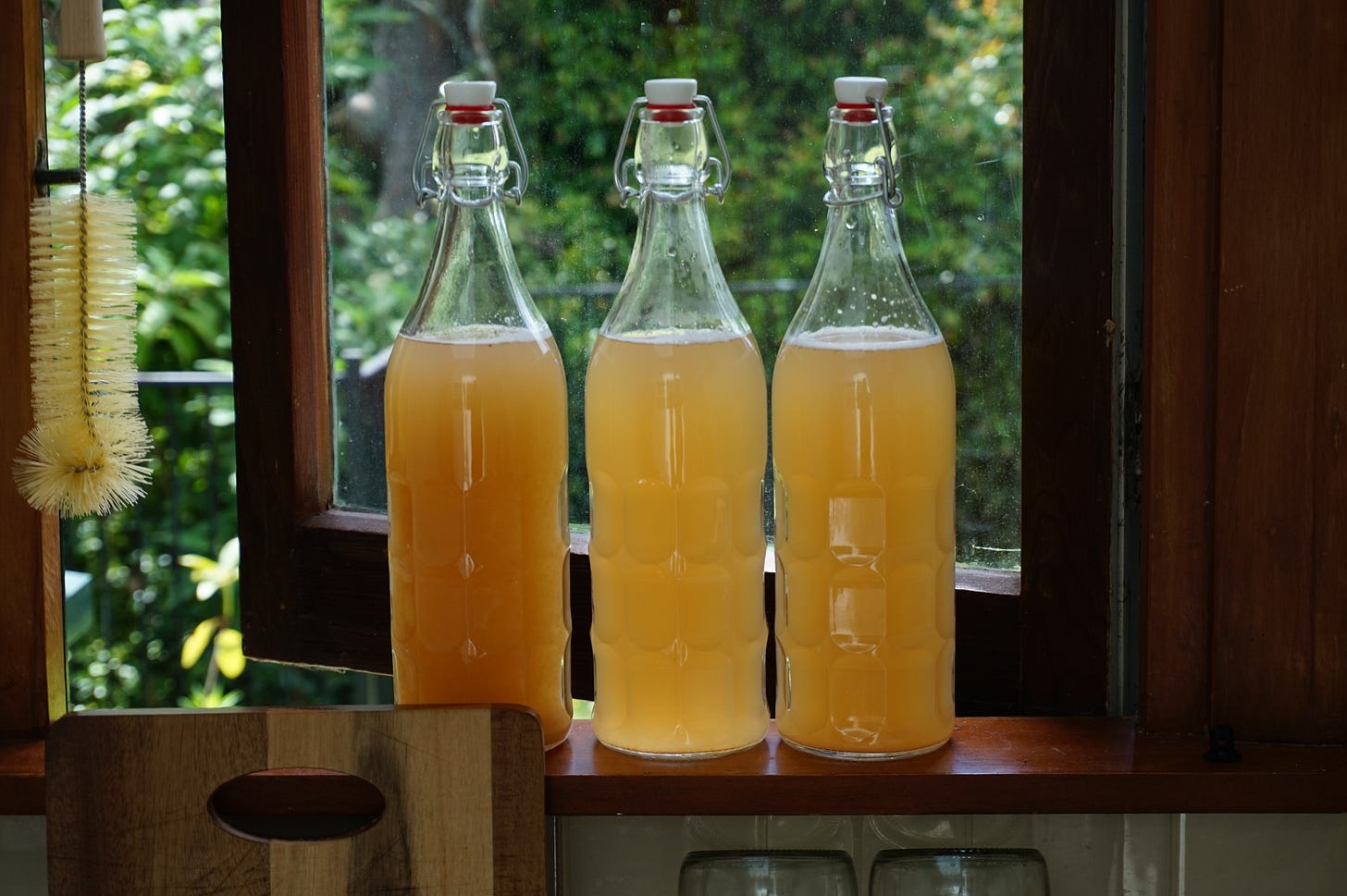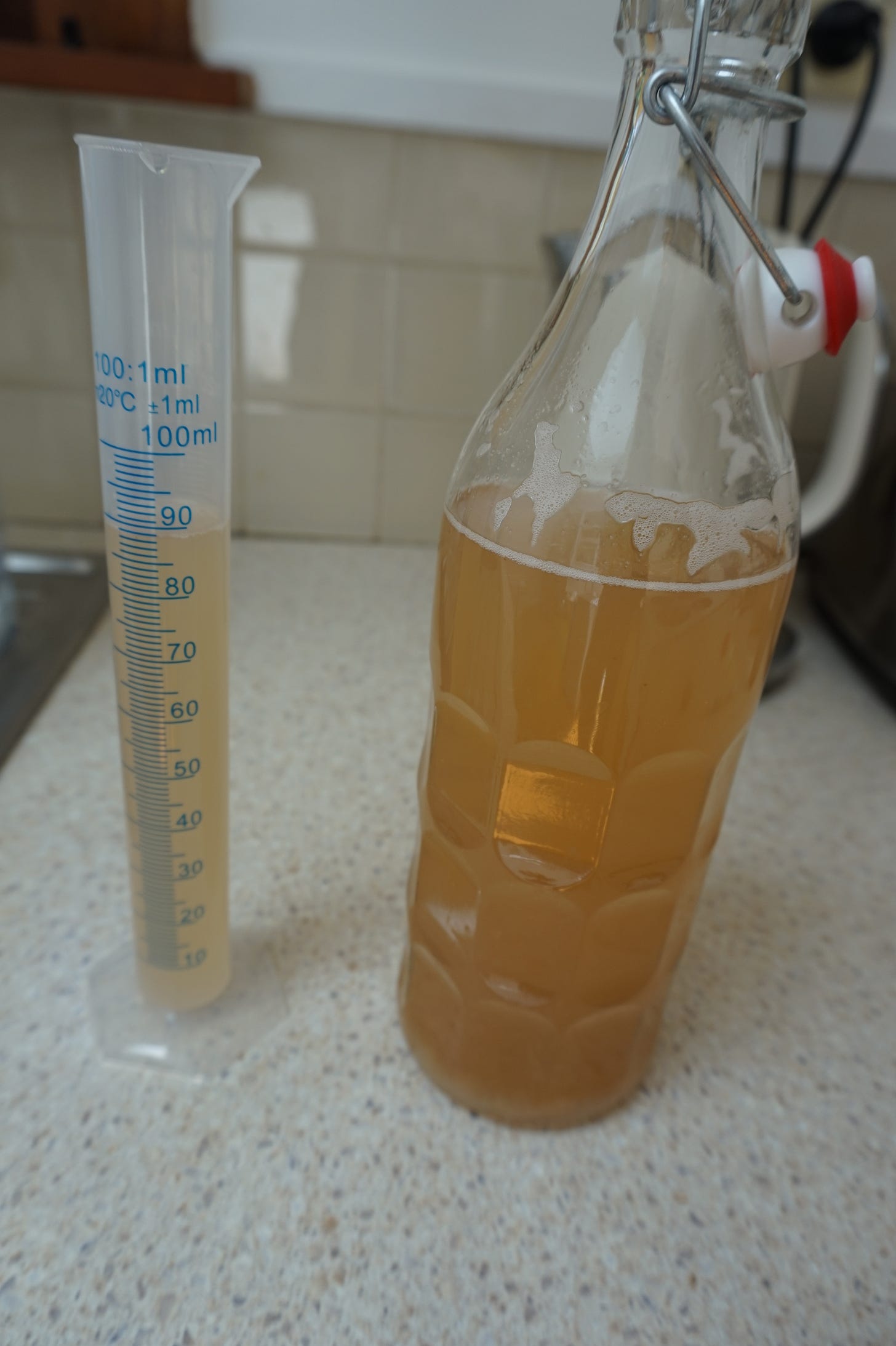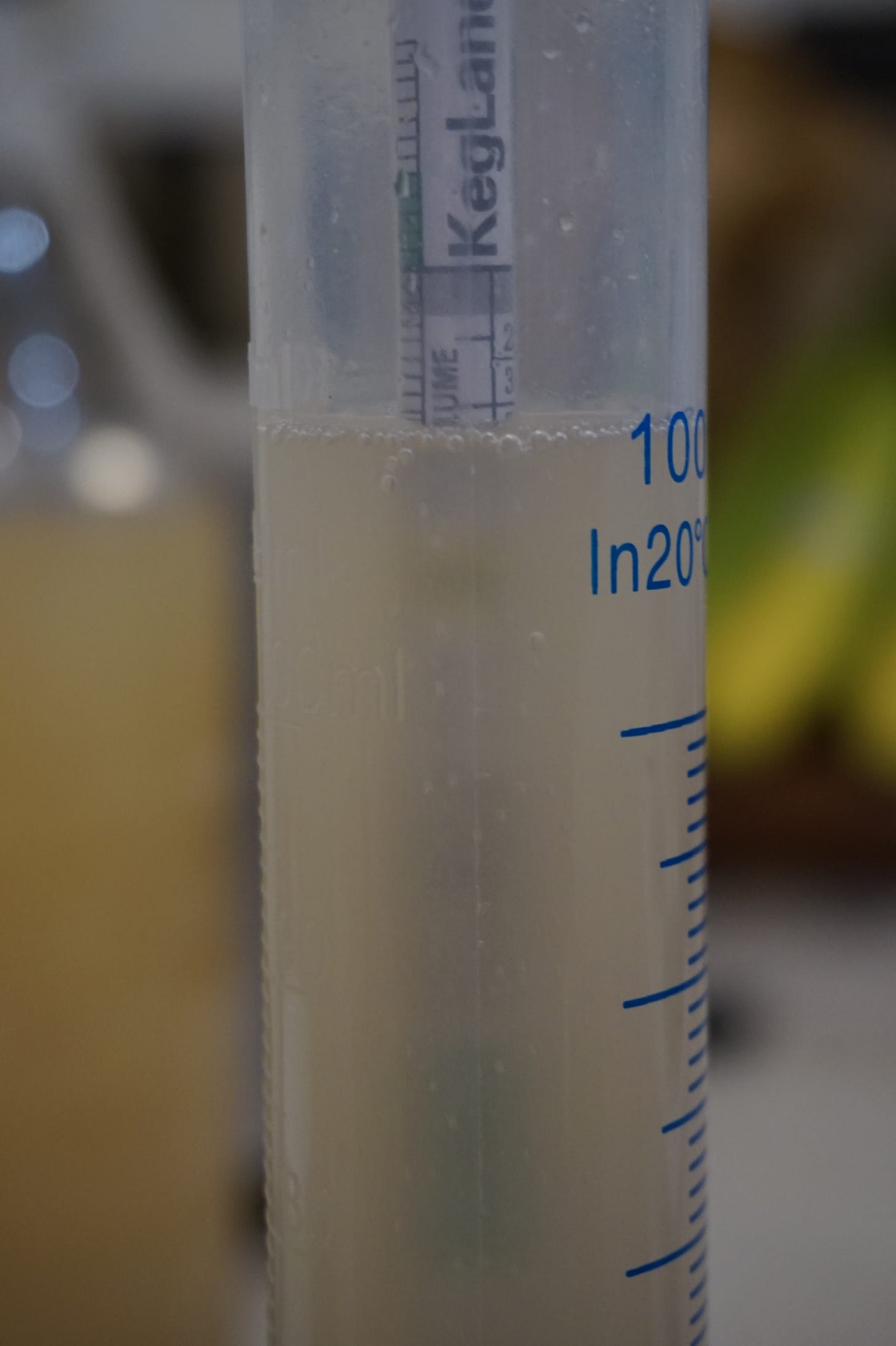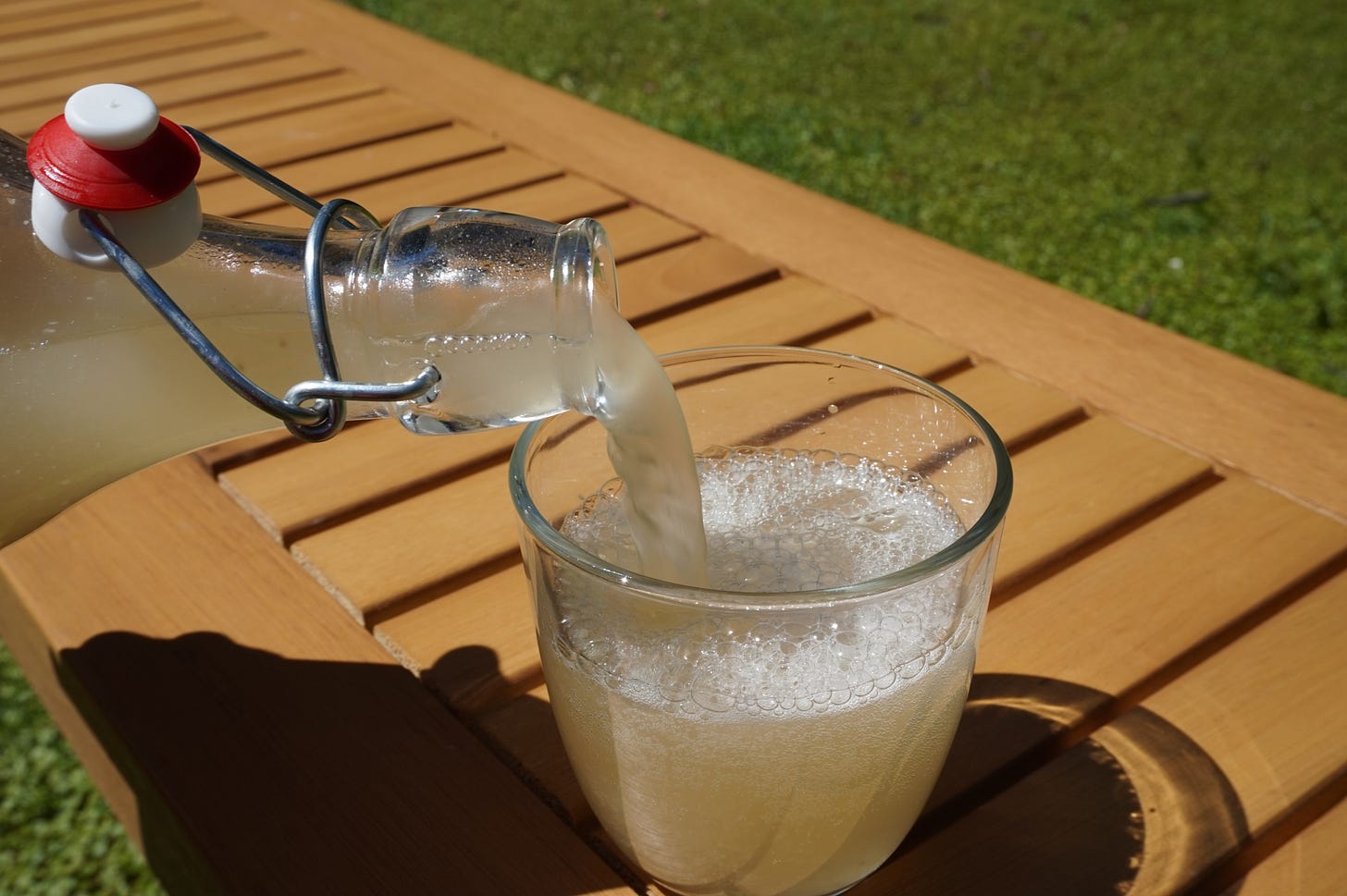Does ginger beer contain alcohol (and how is it measured)?
And while we're at it, what's the difference between ginger beer and ginger ale?
Short answer: yes, ginger beer does contain alcohol. Read on to find out why!
Ginger beer is a brewed drink. Brewing is a process in which yeast eat sugar and produce alcohol and carbon dioxide as a by-product. This gas is makes beer bubbly!
Ginger ale, by contrast, is not brewed using yeast, does not contain alcohol, and while it still contains carbon dioxide, the carbon dioxide is added to a flavoured syrup to produce ginger ale.
The alcohol content of ginger beer can be measured indirectly by using an instrument called a hydrometer. It’s a long glass tube about the width of your thumb, closed at both ends, weighted at one of them, and containing one or more scales marked at regular intervals. They can be readily bought from brewing supply shops.
Mildly amusing aside: the first time I read the inscription “Made in Scotland” on something other than shortbread or a whisky bottle was a hydrometer I bought while in the UK.
Alcohol content is determined indirectly by measuring the relative density (commonly referred in brewing as “specific gravity”) of the liquid; sugar increases the density (and thus buoyancy), alcohol decreases it. Because yeast consume sugar and produce alcohol (and carbon dioxide) during fermentation, over time the brew will contain less sugar, more alcohol and bubbles.
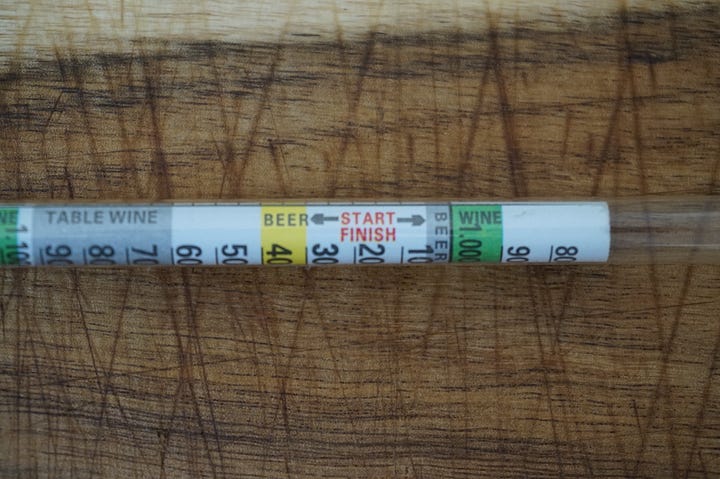
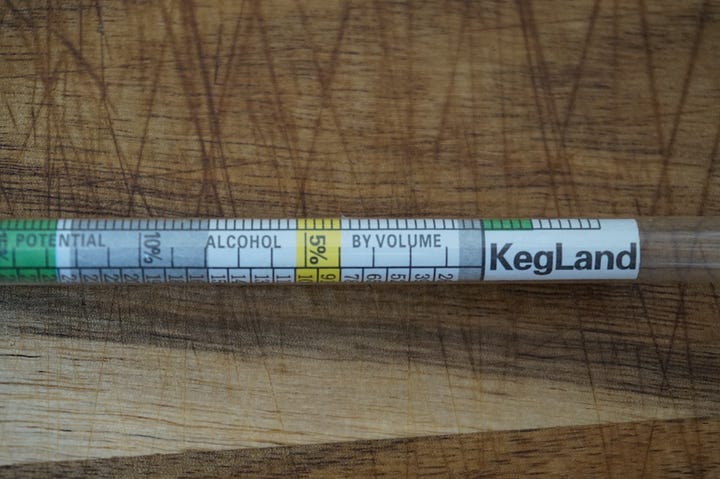
To take a reading, fill a test-tube (hopefully your hydrometer came with one) about three-quarters, then lower the hydrometer into the liquid. The hydrometer will float higher or lower depending on the sugar content of the liquid. Give it a quick spin to get rid of any bubbles which might affect the reading.
Your first reading should be before fermentation starts (before yeast is added), and then at intervals until you reach your desired alcohol content.
To measure the alcohol content, subtract the final reading from the first. This will give your alcohol content as a percentage. So if your first reading starts at 5% in the yellow “Start Beer” band and your final reading is 0%, you will be left with an approximately 5% alcohol content beer.
In the above photo you can see a reading I took of a recent batch which started at 5% and (ignoring fractions for the sake of simplicity) is currently at 2%. So by subtracting the current reading from the start point I know it’s at approximately 3% - just perfect when ginger beer is a firm favourite with the children in this household!
Now you know how to measure the approximate alcohol content of your favourite fizzy beverage. Keep on brewing and enjoy summer with a nice cold one!


